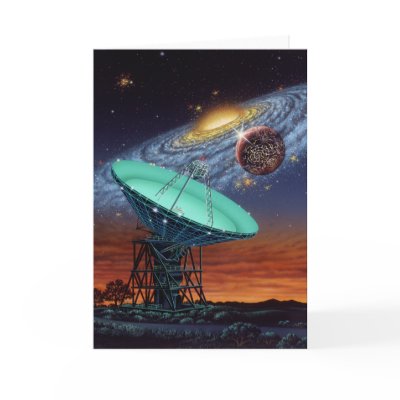
I read the book Intelligent Life in Space by Frank D. Drake as a book length source for my topic. The book talks about the ways which the possibility of alien communication has come to, and the recent discoveries and technical developments. Drake also includes the efforts scientists make toward reaching and contacting another alien civilization. He also doesnt leave out the beginings of stars and planets and how life can come about on a planet like Earth. This book has a little bit of everything.
Drake really did a great job in writing this book. He puts everything into perspective and its really easy to follow. He adds real photos taken by telescopes to really give you an idea of what the Andromeda galaxy or what a star cloud looks like. Drake really makes it seem that he has been all around the universe and back with all of the information packed into his book. He is a great writer.
So the question is, did I find the answer to my question in this book? As the author would say, " In science, the answers are always there to be found. Only sufficient skill and determination are needed to find a path of reserch leading to them"(Drake 13). Also looking at it, the book was published in 1962 so most of the information in here has been updated, or new data is available. Drake did give me a good enough start to know where to start looking for the answer.
Drake, Frank. Intelligent Life in Spac. New York: The Macmillan Company, 1962. Print.
Drake really did a great job in writing this book. He puts everything into perspective and its really easy to follow. He adds real photos taken by telescopes to really give you an idea of what the Andromeda galaxy or what a star cloud looks like. Drake really makes it seem that he has been all around the universe and back with all of the information packed into his book. He is a great writer.
So the question is, did I find the answer to my question in this book? As the author would say, " In science, the answers are always there to be found. Only sufficient skill and determination are needed to find a path of reserch leading to them"(Drake 13). Also looking at it, the book was published in 1962 so most of the information in here has been updated, or new data is available. Drake did give me a good enough start to know where to start looking for the answer.
Drake, Frank. Intelligent Life in Spac. New York: The Macmillan Company, 1962. Print.

